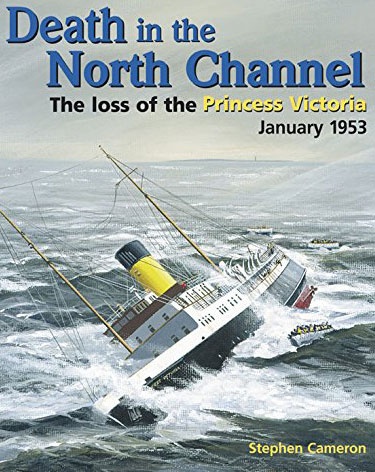 Bangor Historical Society held its opening meeting of 2017 on 12 January. The speaker was Stephen Cameron, author of the book Death in the North Channel about the Princess Victoria disaster on 31 January 1953.
Bangor Historical Society held its opening meeting of 2017 on 12 January. The speaker was Stephen Cameron, author of the book Death in the North Channel about the Princess Victoria disaster on 31 January 1953.
He began by setting the event in context. It was the year of the coronation of Elizabeth II, the first ascent of Everest and the death of Stalin. The Princess Victoria was the latest of a series of Larne-Stranraer ferries and its loss was the worst disaster in the Irish Sea off the Scottish coast. As part of his research for his book he interviewed people and looked at the records of the court of inquiry in PRONI.
The ferry carried cars and had 51 crew and could take 1515 passengers under the command of Captain Ferguson. There were only six lifeboats because the ferry was always within sight of land. The car deck had gates which were only held by a draw bolt. Several earlier incidents showed that the gates were not high enough and if water got into the car deck the ship would list. These warnings were not attended to.
On 31 January there were no vehicles and little cargo. A BBC broadcast warned of a massive gale from the north/north west and 44’ waves, but there was pressure to sail because of train and Royal Mail timetables and the ferry left at 7.45. It took almost an hour to battle up Loch Ryan. Soon it was listing and a sailor sent to board up the gates was unable to do so. A triple X message was sent asking for assistance, followed later by an SOS.
The ship was by this time well into the Irish Sea. Unfortunately, partly due to the type of technology then used, the Scottish coastguard sent the Portpatrick lifeboat too far to the north. The ship was listing more now and lifejackets were handed out. The nearest vessel was HMS Contest which alone could speak directly to the ferry. The engine room flooded and, as the ship drifted further towards the Irish coast, an announcement was made to abandon ship.
By now the Captain thought he could see the mouth of Belfast Lough, which was a great surprise to the coastguard. Some lifeboats were launched. Unfortunately the one which contained the women and children was smashed against the side of the ship and all were drowned. The oars had been washed away from the lifeboats making progress very difficult. As the ship drifted towards the Copelands, the Donaghadee lifeboat, Sir Samuel Kelly, was finally ordered to launch. It rescued most of the 44 who survived of the 179 on board. They were taken to the Imperial Hotel. It was closed for the winter, but was opened up specially.
Among those who died were two prominent local politicians. Sir Walter Smiles, MP for North Down, died almost within sight of his home at Portavo Point. Maynard Sinclair, Northern Ireland Minister of Finance and Deputy Prime Minister, had been due to fly home, but the weather was so bad he went up to Stranraer to catch the ferry.
The chairman thanked the speaker for an excellent talk which had attracted a large crowd.
